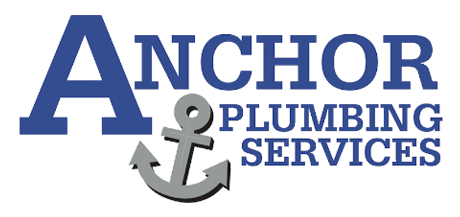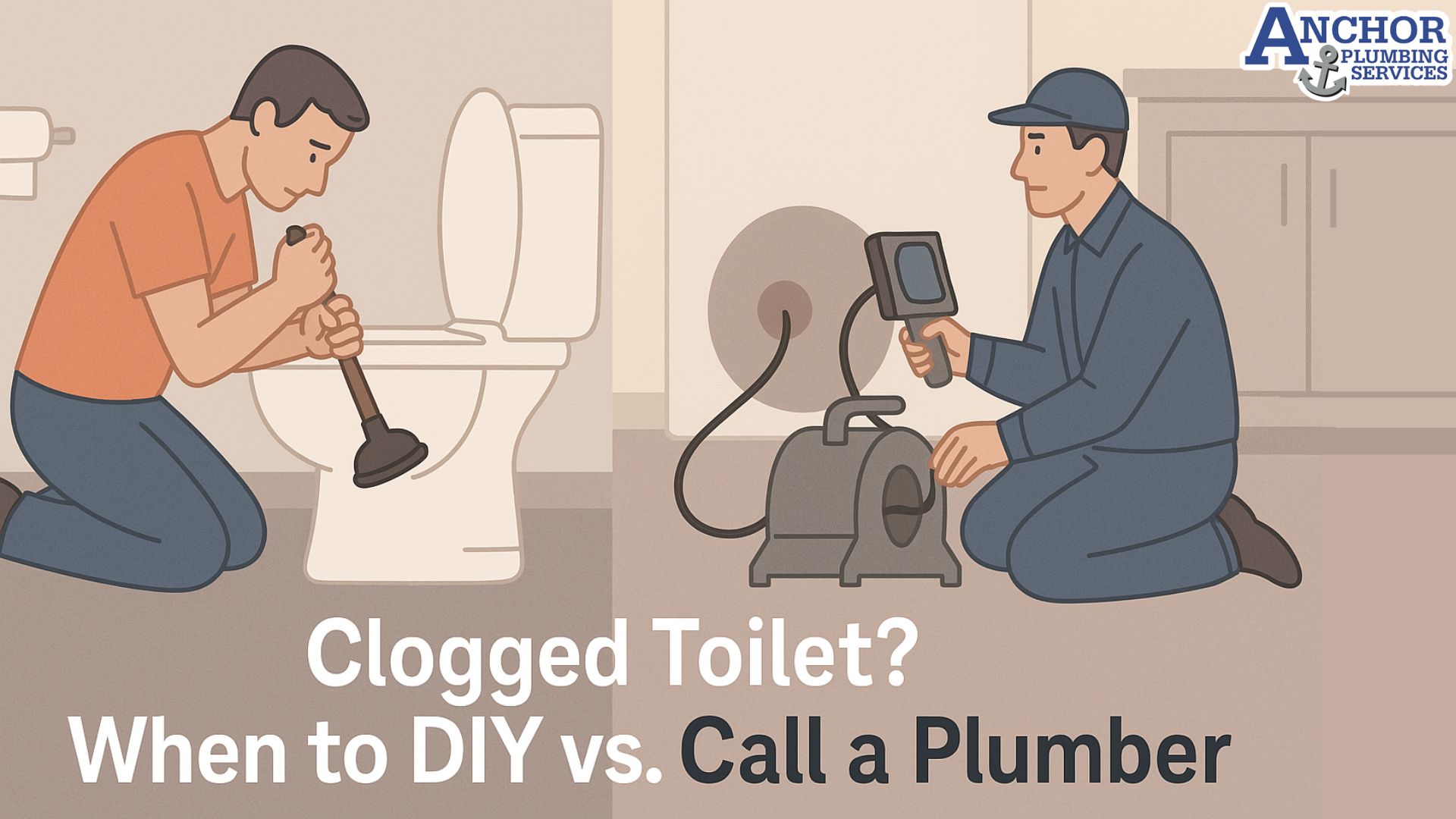A broken or collapsed sewer line occurs when the main pipe carrying wastewater from the home to the municipal system becomes cracked, disjointed, or structurally compromised. Breaks often develop gradually due to aging pipe material, shifting soil, or tree root intrusion. In severe cases, the line can collapse entirely, blocking all flow and requiring full replacement.
A broken sewer line may result in recurring drain backups, soil saturation, or foundation stress.
Collapsed pipes often lead to wastewater pooling beneath the yard or seeping through slab cracks, creating property damage and health hazards. Many homeowners mistake the symptoms for ordinary clogs, but deep structural failure is usually the underlying cause.
This article explains how to recognize the early warning signs of sewer line damage, what causes it, and how to confirm whether a break or collapse has occurred.
What Causes a Sewer Line to Break or Collapse?
Sewer pipes collapse due to long-term structural stress or sudden disruption in soil stability. In most cases, failure is the result of one or more of the following:
- Aging materials: Older pipes made of cast iron or clay degrade over time. Cast iron has a lifespan of 40 to 70 years, and clay pipes often fail earlier due to brittleness.
- Soil shifting and expansion: Soil expansion may result in joint displacement or pipe slope failure. This is common in areas with expansive clay soil.
- Tree root intrusion: Roots enter through small cracks and grow aggressively, pushing joints apart and causing flow restriction or fractures.
- Pipe bellies: A belly occurs when a section of pipe sags due to poor bedding or erosion. Wastewater pools in these low spots, weakening pipe walls and increasing clog risk.
- Poor installation: Pipes with improper slope, unsealed joints, or low-grade materials are more likely to collapse under normal soil pressure or ground load.
Older pipes are more likely to fail when exposed to root pressure, poor backfill, or years of sediment buildup.
Warning Signs of a Broken or Collapsed Sewer Line
Early symptoms of a damaged or collapsed sewer line often resemble routine plumbing issues. However, if multiple symptoms occur at once, it usually signals deeper structural failure.
- Multiple slow drains throughout the home: While a single clog affects one fixture, multiple slow drains across the home suggest a deeper issue.
- Gurgling sounds from toilets or drains: Gurgling often indicates trapped air caused by improper venting or backed-up wastewater.
- Foul sewer gas odors indoors or outside: Foul odors suggest gas leakage from a cracked or collapsed pipe, often due to methane escaping into the air.
- Soft, wet spots in the yard or foundation slab: Wet soil may point to pipe failure underground. It often occurs near lateral joints or collapsed sections.
- Backed-up floor drains or basement flooding: When wastewater reverses through lower drains, it often means the pipe is blocked or structurally compromised.
Recognizing these symptoms early helps prevent interior flooding and major property damage.
How Professionals Confirm a Broken Sewer Line
Visual signs are not enough to confirm a sewer line break. Licensed plumbers use diagnostic tools to inspect the pipe’s interior and identify failure points.
- Sewer camera inspection: This process reveals internal damage, blockages, joint separation, or root intrusion. A high-definition camera is inserted through the cleanout and records the entire length of the pipe.
- Hydrostatic pressure testing: Pressure tests are used to identify leaks in sections that may not show visible cracks. The system is filled with water and monitored for pressure loss.
- Smoke testing: Smoke testing helps detect leaks by pushing non-toxic smoke into the line. Escaping smoke shows where cracks, gaps, or disconnections exist.
These tests provide exact location data and determine whether a full or partial repair is required.
What Happens If You Ignore a Broken Sewer Line?
Untreated sewer line damage can lead to severe structural and health-related consequences. What begins as a minor leak or blockage may quickly escalate into full system failure.
- Interior and foundation damage: When wastewater seeps beneath a slab or into flooring, it weakens building materials and contributes to long-term structural damage.
- Health hazards from sewage exposure: Blackwater exposure increases risk of bacterial infection and cross-contamination. Prolonged exposure may cause respiratory illness due to mold spores or airborne toxins.
- Unpleasant odors and environmental risk: Broken pipes release methane and allow pathogens to enter living areas or outdoor soil, posing a public health risk.
- Increased repair costs over time: Ignoring symptoms increases repair cost. Full line replacements are more expensive than early spot repairs or trenchless solutions.
Acting early can prevent thousands in restoration costs and protect household health.
San Antonio Conditions That Increase Sewer Line Risk
San Antonio homes are prone to sewer line issues due to a combination of environmental and infrastructure-related factors.
- Expansive clay soil: The region’s clay-rich soil expands with moisture and contracts during dry spells. Expansive soil may lead to pipe joint separation, slope disruption, or full collapse.
- Tree-lined residential neighborhoods: Older areas with mature trees often experience root intrusion, especially where sewer lines are shallow or unlined.
- Older cast iron systems: Many homes in central San Antonio were built before 1980 and use cast iron pipes, which degrade internally after 40 to 70 years. Older pipes in the area often fail due to corrosion or joint fatigue.
- Slab-on-grade foundations: Sewer lines beneath slabs are harder to access and more vulnerable to movement from shifting soil and ground pressure.
- Permit and inspection oversight: The San Antonio Water System (SAWS) regulates sewer tie-ins and repairs. Permit compliance may affect both timeline and cost of sewer work.
Local soil conditions and aging infrastructure increase the likelihood of sewer failure in San Antonio homes.
What to Do If You Suspect Sewer Line Damage
If you notice these signs—multiple slow drains, gurgling toilets, or sewage odors—take immediate action. Do not run water until the system has been assessed. Continued use can worsen existing damage or cause interior flooding.
Homeowners should contact a licensed plumber to perform a sewer camera inspection through the main cleanout. The inspection identifies internal pipe conditions, blockage points, and signs of collapse.
Document any visible symptoms, such as wet yard spots, sewage backups, or fluctuating toilet water levels. Sharing these observations with the technician helps guide the repair process.
Early diagnosis helps prevent widespread damage, costly excavation, and future contamination risks.
Frequently Asked Questions
Can a sewer line collapse suddenly?
A sewer line can collapse when shifting soil or advanced corrosion causes structural failure, especially in aging or brittle pipe systems.
Does insurance cover broken sewer lines?
Most insurance policies cover sewer line damage only if a specific rider is included. Coverage depends on the cause of failure and policy type.
What’s the difference between a clog and a collapse?
A clog usually affects only one drain or fixture. A collapse blocks the entire line and often causes widespread backups across the home.
Conclusion
A broken or collapsed sewer line can cause serious damage if not addressed early. Gurgling drains, sewage odors, and recurring backups often indicate structural failure—not just a typical clog. Timely inspection using camera diagnostics ensures that the problem is identified before it escalates.
Early detection saves time and cost. Licensed technicians can identify the exact source of failure and recommend the most effective solution.
Anchor Plumbing Services provides expert sewer line diagnostics and repair in San Antonio, using advanced inspection tools and long-lasting repair methods trusted by local homeowners.


